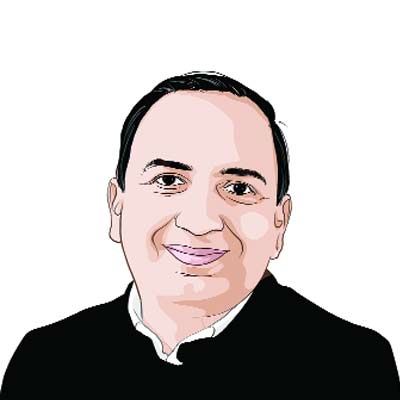Opinion The Coming Tandava
The West Bengal Governor,Gopal Gandhi,has powerfully stated a widely perceived truth.
The West Bengal Governor,Gopal Gandhi,has powerfully stated a widely perceived truth. Almost all the political forces in Bengal have significantly fomented serious political violence.
We are still a little bit complacent about just how precarious the political situation is in West Bengal. The state has,by its own admission,lost minimal governance capacities along several dimensions.
It has admitted to its own failure to rid Lalgarh of Maoists; indeed the CPM is now beginning to finally acknowledge the Maoist threat. There is anecdotal evidence that the CPM’s capacity to take elementary decisions over development is now seriously in question. The party has wrecked the state.
There is mind-boggling casualness about killings in the countryside,with each side readily using a “revenge” narrative. The Trinamool’s single point agenda is to continually embarrass the Government,and nothing embarrasses the Government more than violence.
One can understand the difficult circumstances in which Mamata Banerjee kept Opposition alive in Bengal. But the Trinamool in its political operations has acquired so many of the more unsavoury aspects of CPM’s political culture.
Many of the system of institutionalised violence that had helped consolidate the CPM’s power are now simply switching over to Trinamool. The pada mastans are still ubiquitous in street mobilisations in West Bengal,and the resulting politics is a curiously macabre carnival of power,more interested in performative displays than in solving real problems.
Many of these displays are harmless,but their capacity to inflict economic disruption is enormous. The ubiquitous Friday bandhs — well designed ploys to give people the long week end – are yet another sign of how the culture of politics will not change with the passing of CPM.
Indeed this phenomenon,that a state like Bengal has produced a politics of street power unlike that of any other state,that can so wilfully and casually inflict disruption on the lives of millions,deserves serious analysis. Bengali intellectuals are enviably sophisticated
But they are strangely resistant to shedding any real light on the culture of Bengal politics (I should qualify this by saying,at least the ones that write in English); and they have been a very timid force in condemning the excesses of both CPM and now Trinamool politics.
The possibility of the violence deepening is quite high. For one thing,there are thousands of people whom the CPM had,in small and big ways suppressed. Some of them are,quite literally,willing to sock it back to their tormentors.
Remember this is a state where local party cadres would beat up your family,if a family member working in far of places did not return home and vote for the party. The CPM also controls so much of the local political economy that disembedding them without violence is not going to be easy.
I also suspect,in coming days,there will be emerging tensions between Trinamool and Congress. While it makes political sense for them to stick together,there are potential conflicts of interest. Congress senses,rightly,that it can now gain some momentum in the state. And don’t be surprised if there is some big push by Youth Congress for a membership drive of the kind we saw in Gujarat and Punjab.
It will be interesting to see how Trinamool reacts to all this. Trinamool may also prove to be a potential embarrassment to Congress,and so this relationship will not be as seamless as many hope. Finally,there is a standard argument that as long standing one party regimes disintegrate,there is a vacuum which all kinds of forces can come to fill. Let us just hope that communalism is not part of this mix.
Violence is not inevitable; it never is. But the trajectories which CPM and Trinamool are taking do not bode well for the future of West Bengal. The Governor might have put it very pointedly,but “tandava” is a real possibility in Bengal. The issue is no longer whether CPM is better or Trinamool. The issue is,how both will be weaned away from a political culture of violence and intimidation.


